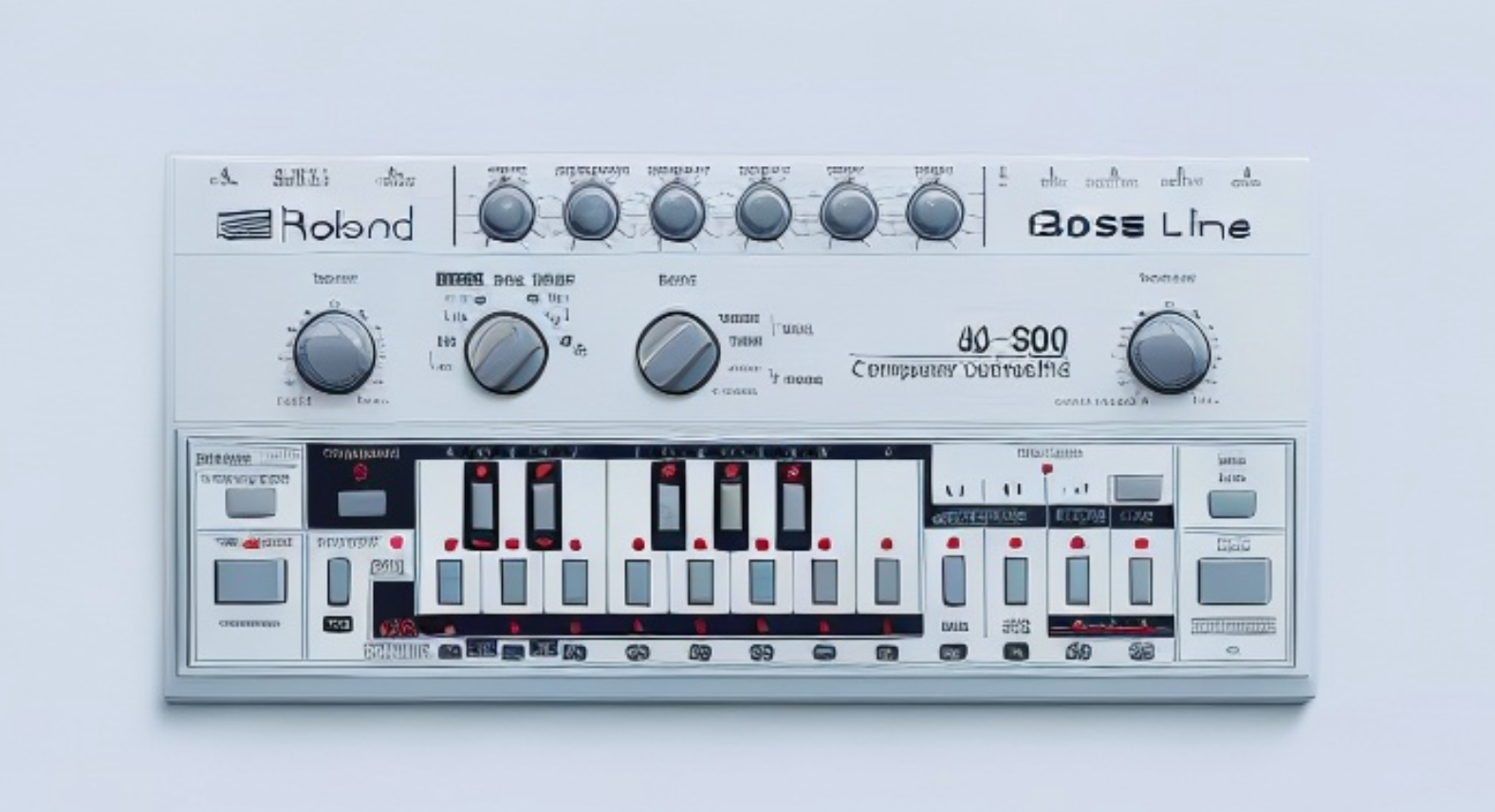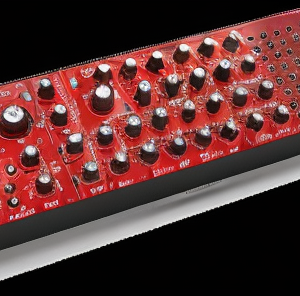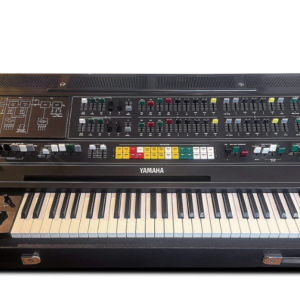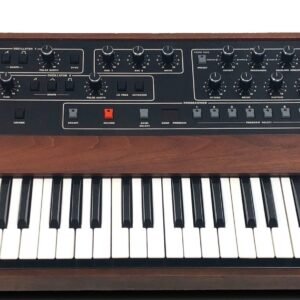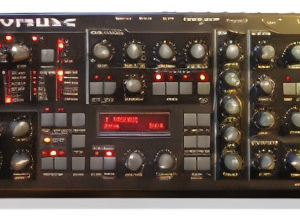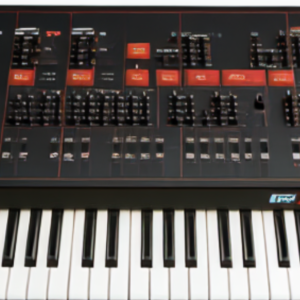Introduction
The Roland TB-303 is a legendary analog bass synthesizer that revolutionized electronic music production. Introduced in 1982, the TB-303 was initially designed to simulate bass guitars for practice purposes. However, it gained immense popularity in the burgeoning electronic music scene of the 1980s, particularly in the genres of acid house, techno, and electronic dance music (EDM). Despite its initial commercial failure, the TB-303’s unique sound and intuitive interface made it a cult classic and an iconic instrument in the history of electronic music.
The TB-303’s distinctive sound is characterized by its squelchy, resonant basslines and its ability to produce quirky and unpredictable patterns. Its analog sound engine, coupled with its simple yet effective interface, allowed musicians to create infectious basslines with ease. Despite its limitations compared to modern synthesizers, the TB-303’s sound has remained highly sought after and continues to be used in a wide range of musical genres.
In this article, we will explore the design, features, and impact of the Roland TB-303, highlighting its role in shaping the electronic music landscape and its enduring legacy in the world of music production.
Design and Features
The Roland TB-303 features a compact and straightforward design, characteristic of early Roland synthesizers. Its iconic appearance, with a sleek silver casing and distinctive layout, has become instantly recognizable among musicians and enthusiasts alike.
At the heart of the TB-303 is its analog sound engine, which generates the signature bass sounds that have made it famous. The synthesizer includes a single oscillator capable of producing sawtooth and square waveforms, giving users the versatility to create a variety of bass tones. Additionally, the TB-303 features controls for adjusting parameters such as cutoff frequency, resonance, envelope modulation, and accentuation, allowing for the creation of dynamic and expressive basslines.
One of the most notable features of the TB-303 is its onboard sequencer, which plays a crucial role in its unique workflow. The sequencer allows users to program patterns of up to 16 steps, each with its own pitch, accent, slide, and tie settings. This step-based sequencing approach, combined with the TB-303’s distinctive sound palette, enabled musicians to craft intricate and hypnotic basslines with unparalleled groove and character.
In terms of connectivity, the TB-303 includes standard MIDI inputs and outputs, allowing it to integrate seamlessly with other MIDI-compatible devices and software. This feature has facilitated its use in modern music production setups, where it can be easily synchronized with digital audio workstations (DAWs) and MIDI controllers for enhanced creative flexibility.
Despite its relatively limited feature set compared to contemporary synthesizers, the TB-303’s intuitive interface and unique sonic character have cemented its status as a timeless classic in the world of electronic music. Its enduring popularity and continued use in a wide range of musical genres stand as a testament to its lasting influence and legacy.
Sound Generation
The Roland TB-303 is renowned for its distinctive and influential sound generation capabilities, which have left an indelible mark on the landscape of electronic music. At the core of its sonic character is its analog synthesis engine, which delivers rich, resonant bass tones with a unique character that is instantly recognizable.
The TB-303’s sound generation starts with its single analog oscillator, which can produce both sawtooth and square waveforms. These waveforms serve as the foundation for creating basslines with varying textures and timbres. The choice between sawtooth and square waveforms allows users to sculpt their sound, whether they prefer the smoother, more rounded tones of the sawtooth waveform or the sharper, more aggressive character of the square waveform.
In addition to waveform selection, the TB-303 offers a range of parameters that users can manipulate to shape the sound to their liking. Key among these is the cutoff frequency control, which determines the point at which frequencies above a certain threshold are attenuated. By adjusting the cutoff frequency, users can shape the tonal character of the sound, from deep and resonant to bright and percussive.
Another essential feature of the TB-303’s sound generation is its resonance control, which emphasizes frequencies around the cutoff point, adding a distinctive “squelchy” quality to the sound. This resonance effect, combined with careful manipulation of the cutoff frequency, allows users to create basslines with a pronounced and dynamic presence that cuts through the mix.
Furthermore, the TB-303 includes envelope modulation controls, which govern the shape and behavior of the sound over time. By adjusting parameters such as decay and accentuation, users can add movement and expressiveness to their basslines, creating dynamic and evolving patterns that enhance the overall musicality of their compositions.
Overall, the sound generation capabilities of the Roland TB-303 have played a pivotal role in shaping the sonic landscape of electronic music. Its unique combination of analog warmth, resonant squelch, and intuitive interface has made it a staple instrument in the arsenal of producers and musicians worldwide, ensuring its enduring legacy in the history of electronic music production.
Technical Specifications
Here are the technical specifications of the Roland TB-303:
1. **Synthesis Type**: Analog subtractive synthesis.
2. **Oscillator**: Single oscillator with sawtooth and square waveforms.
3. **Filter**: Low-pass resonant filter with cutoff frequency and resonance controls.
4. **Envelope**: Simple envelope generator with decay control.
5. **Sequencer**: Step-based sequencer with 16 steps and individual controls for pitch, accent, slide, and tie.
6. **Connectivity**: Standard MIDI input and output.
7. **Power**: AC adapter or batteries (6 AA batteries).
8. **Dimensions**: Approximately 300 (W) x 135 (D) x 55 (H) mm.
9. **Weight**: Approximately 1.2 kg (without batteries).
10. **Controls**: Knobs for tuning, cutoff frequency, resonance, envelope modulation, and accentuation. Switches for waveform selection and sequencer functions.
These specifications provide an overview of the Roland TB-303’s capabilities and technical details, showcasing its compact design, analog sound engine, and intuitive interface.
Performance and Workflow
The Roland TB-303’s performance and workflow capabilities have been integral to its enduring popularity and influence in electronic music production. Its intuitive interface and unique sequencing capabilities have made it a favorite tool among musicians and producers for crafting infectious basslines and rhythms with unparalleled groove and character.
One of the key features that define the TB-303’s workflow is its step-based sequencer. The sequencer allows users to program patterns of up to 16 steps, with individual controls for pitch, accent, slide, and tie. This step-based approach to sequencing enables users to create complex and dynamic basslines with ease, using a combination of programmed notes, accents, and slides to add movement and expression to their compositions.
The TB-303’s sequencer also includes a built-in pattern memory, allowing users to store and recall their favorite patterns quickly and easily. This feature is particularly useful for live performance, where musicians can switch between patterns on the fly to create seamless transitions and variations in their music.
In terms of performance, the TB-303’s compact and portable design makes it ideal for use both in the studio and on stage. Its sturdy construction and intuitive layout ensure that users can navigate its controls effortlessly, whether they are programming patterns, tweaking parameters, or performing live improvisations.
Additionally, the TB-303’s integration with MIDI technology expands its performance capabilities even further, allowing users to synchronize it with other MIDI-compatible devices and software. This opens up a world of possibilities for creative expression, enabling users to incorporate the TB-303 into larger production setups and explore new sonic territories.
Overall, the Roland TB-303’s performance and workflow capabilities have played a significant role in its status as an iconic instrument in electronic music production. Its intuitive interface, unique sequencing features, and versatile performance capabilities have made it a timeless classic, cherished by musicians and producers around the world.
Notable Users and Influences
The Roland TB-303 has left an indelible mark on the world of electronic music, influencing countless artists and shaping the sound of numerous genres. Since its introduction in the 1980s, the TB-303 has been embraced by a diverse array of musicians, producers, and DJs, who have harnessed its unique sonic capabilities to create groundbreaking music that pushes the boundaries of creativity and experimentation.
One of the most notable users of the TB-303 is the pioneering electronic music group, Phuture. Comprised of DJ Pierre, Spanky, and Herb J, Phuture is credited with popularizing the sound of acid house—a genre characterized by its hypnotic basslines, squelchy textures, and infectious rhythms—through their seminal track “Acid Tracks” released in 1987. The distinctive sound of the TB-303 played a central role in defining the aesthetic of acid house, inspiring a new generation of producers and becoming synonymous with the genre itself.
In addition to Phuture, a multitude of artists and producers across various electronic music genres have embraced the TB-303 as a cornerstone of their sound. From the pioneering techno of artists like Derrick May and Juan Atkins to the experimental electronica of Aphex Twin and Autechre, the TB-303’s influence can be heard across a wide spectrum of musical styles and movements.
Furthermore, the TB-303’s impact extends beyond the realm of electronic music, influencing artists in genres as diverse as hip-hop, rock, and pop. Its distinctive sound and intuitive interface have inspired musicians across genres to incorporate its unique textures and rhythms into their music, further cementing its status as an iconic instrument with broad-ranging appeal.
Overall, the Roland TB-303’s influence on music culture cannot be overstated. Its distinctive sound, innovative sequencing capabilities, and intuitive interface have made it a favorite tool among musicians and producers for over four decades, leaving an enduring legacy that continues to shape the evolution of electronic music to this day.
mpact and Legacy
The impact of the Roland TB-303 on the landscape of electronic music cannot be overstated. Introduced in the early 1980s as a bass accompaniment for guitarists, the TB-303 initially met commercial failure. However, its fate took a dramatic turn when it found its way into the hands of pioneering musicians who discovered its untapped potential for creating innovative sounds and rhythms.
One of the most significant contributions of the TB-303 is its role in shaping the sound of acid house—a genre that emerged from the underground dance music scenes of Chicago and Detroit in the late 1980s. Artists like Phuture utilized the TB-303’s squelchy basslines and hypnotic sequences to create a new sonic aesthetic that resonated with audiences worldwide. The infectious grooves of tracks like “Acid Tracks” laid the foundation for a cultural movement that would influence generations of musicians and redefine the possibilities of electronic music production.
Beyond acid house, the TB-303’s influence has permeated a wide range of musical genres, from techno and trance to hip-hop and beyond. Its distinctive sound and intuitive interface have inspired countless artists to explore new sonic territories and push the boundaries of creativity. Moreover, the TB-303’s role in live performance has revolutionized the way electronic music is experienced, with its portable design and dynamic sequencing capabilities empowering musicians to create immersive and spontaneous performances that captivate audiences.
In terms of its legacy, the TB-303 remains an iconic symbol of electronic music culture, revered by musicians, producers, and enthusiasts worldwide. Despite its discontinuation in the 1980s, the demand for the TB-303 remains strong, with vintage units fetching high prices on the second-hand market. Moreover, its influence can be heard in the countless software emulations and hardware clones that seek to capture the essence of its iconic sound.
In conclusion, the Roland TB-303’s impact and legacy extend far beyond its humble beginnings as a bass accompaniment. Its influence on the evolution of electronic music is undeniable, and its distinctive sound continues to inspire artists to this day. As a testament to its enduring legacy, the TB-303 remains a timeless classic—a symbol of innovation, creativity, and the limitless possibilities of electronic music production.
Collector's Value and Market Trends
The Roland TB-303 holds a unique position in the world of musical instruments as not just a tool for music creation but also as a highly sought-after collector’s item. Its limited production run, coupled with its significant impact on electronic music, has led to a robust market for vintage TB-303 units, with prices often reflecting its iconic status and historical significance.
Over the years, the demand for original TB-303 units has remained strong among collectors, enthusiasts, and musicians alike. As a result, the market value of vintage TB-303s has steadily increased, with well-maintained units commanding premium prices. Factors such as the condition of the unit, its serial number, and any accompanying accessories or documentation can all influence its market value.
Additionally, the scarcity of original TB-303 units has led to a thriving market for refurbished or modified units. Many enthusiasts and collectors seek out these refurbished units, which have been restored to their original condition or modified with modern enhancements while retaining the classic TB-303 sound and aesthetic. These refurbished units often come with a premium price tag, reflecting the craftsmanship and attention to detail invested in their restoration or modification.
In recent years, the resurgence of interest in vintage synthesizers and analog gear has further fueled the demand for TB-303 units, driving prices even higher. Auction sites, online marketplaces, and specialized dealers cater to collectors and enthusiasts seeking to add a TB-303 to their collection, with prices varying depending on factors such as rarity, condition, and historical significance.
Furthermore, the continued popularity of the TB-303 in electronic music production and performance ensures that demand for vintage units remains strong. Many musicians and producers value the unique sound and character of the TB-303, making it a prized addition to their studio setup or live rig.
Overall, the collector’s value and market trends surrounding the Roland TB-303 reflect its status as a cultural icon and a pioneering instrument in the world of electronic music. As the demand for vintage analog synthesizers continues to grow, the TB-303’s legacy as a timeless classic is likely to endure, ensuring its place in music history for generations to come.
Innovations and Contributions
The Roland TB-303 stands as a testament to innovation and creativity in the realm of electronic music. Its development marked a significant milestone in the evolution of synthesizer technology, introducing groundbreaking features and capabilities that would shape the future of music production and performance. Here are some of the key innovations and contributions of the TB-303:
1. **Step-Based Sequencing**: One of the most revolutionary aspects of the TB-303 is its step-based sequencer. This innovative approach to sequencing allows users to program patterns of up to 16 steps, each with its own pitch, accent, slide, and tie settings. This step-based sequencing revolutionized the way musicians approached rhythm programming, providing a simple yet powerful tool for crafting dynamic and expressive patterns.
2. **Real-Time Parameter Control**: The TB-303’s intuitive interface allows for real-time manipulation of key parameters such as cutoff frequency, resonance, and envelope modulation. This hands-on approach to sound design empowers users to sculpt and shape their sounds on the fly, adding a level of immediacy and expressiveness to their music-making process.
3. **Analog Sound Engine**: At its core, the TB-303 features an analog sound engine that produces rich, warm bass tones with a distinctive character. This analog circuitry contributes to the unique sonic palette of the TB-303, imbuing its sound with a sense of warmth, depth, and authenticity that is highly sought after by musicians and producers.
4. **Integration with MIDI Technology**: Despite being introduced in the early 1980s, the TB-303 includes MIDI connectivity, allowing it to seamlessly integrate with other MIDI-compatible devices and software. This forward-thinking feature extends the TB-303’s capabilities beyond its standalone operation, enabling users to incorporate it into larger production setups and explore new creative possibilities.
5. **Cultural Impact**: Perhaps the most significant contribution of the TB-303 is its cultural impact on the world of electronic music. From its role in the birth of acid house to its influence on a wide range of musical genres and styles, the TB-303 has left an indelible mark on music culture. Its distinctive sound and intuitive interface have inspired countless artists and producers, shaping the sonic landscape of electronic music for decades to come.
Overall, the Roland TB-303’s innovations and contributions have earned it a place of honor in the annals of music history. Its legacy as a pioneering instrument continues to resonate with musicians and enthusiasts worldwide, ensuring its enduring relevance and influence in the ever-evolving world of electronic music.
